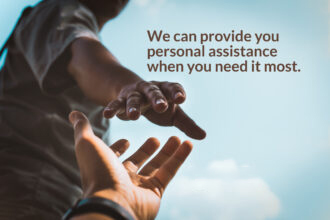Students Try to Cope as Pandemic Strains Mental Health

WebMD Health News March 2021 By Jennifer Clopton
Sixteen-year-old Sarah* was diagnosed with anxiety and depression before the pandemic, but she was managing it well with counseling, medication, and lifestyle changes.
Now, a year into the pandemic, there are days when she can barely get out of bed.
“In the beginning of the pandemic, I felt claustrophobic,” Sarah says. “I was, like, I can’t be in this house for this long. This is going to drive me crazy.”
As the pandemic wore on, she would have episodes where she lacked motivation to do much of anything. Her room was a mess. The laundry piled up.
Sarah is getting professional help and says she can talk to her mother about anything. She also says she’s not suicidal. But she admits she is struggling a year into the pandemic because she feels isolated with virtual school. She even does her schoolwork alone in her bedroom because that’s where there’s room for a desk.
She laments the major teen milestones she’s missing. No sweet 16 birthday party she was looking forward to. She misses her friends but is frustrated and unnerved by how many of them aren’t taking the pandemic seriously. Some don’t wear masks or take social distancing seriously.
And while she has a job, she worries that her work in a coffee shop puts her family at risk. She’s also concerned about her grandparents’ health because they live near extended relatives who visit often, aren’t vaccinated, and don’t wear masks.
“Things just feel out of control,” she says. “I haven’t seen my friends in a long time. I just don’t want to hang out with people. I double up on masks if I go in someone’s house, but it’s just so much and it all feels scary.
“It’s so many things to think about at once. There’s no escape and it’s really suffocating.”
Sarah and millions of other teens and young adults are part of a mental health crisis that was worsening before the pandemic but has only accelerated in the past year. Experts say the time for interventions is now.
Hudson*, a 19-year-old college freshman who has anxiety and depression that’s been amplified during the pandemic, has struggled deeply too. Being apart from everyone and the year of lockdowns leave him alone and inside too often.
“Often, I spend days at a time without leaving my house. My sleep schedule gets thrown off and slowly, I begin to get depressed,” he says. “It’s been tough. This was far from a typical, fun, and exciting freshman year. It’s one most of us will be happy to move forward from.”
Hudson says he knows he’s not alone but admits it feels, to him and many others his age, like there are two public health crises going on at once and the world is paying attention to only one of them.
“I feel like everything has been about social distancing and protecting the most vulnerable people. While teens agree this is important, there has been no effort or emphasis on our mental well-being,” Hudson says. “For us, the toll it’s taken on our mental health has far outweighed the potential risks of COVID. Teens are dying from mental health issues, not COVID.”
Mental Health Toll on Students is Growing
Mental health experts know Sarah and Hudson aren’t alone.
Reports of depression, anxiety, and suicidal thoughts among older adolescents and young adults have increased throughout the pandemic, says Kelly Davis, associate vice president of peer and youth advocacy at Mental Health America.
There have also been “increases in young people reaching out and accessing mental health services, whether that is therapy or showing up in the emergency room for mental health crises,” she says.
Rates of anxiety and depression have been high among all adults during the pandemic — up 6.3% between April and December 2020 — but pandemic pressure is not just an adult problem.
Students of all ages — from elementary school all the way through college — are struggling amid intense pandemic pressure, too.
Data and research back that up.
- The CDC has found that children’s mental health-related visits to emergency rooms have been up as much as 25%.
- Mental Health America’s 2021 State of Mental Health in America report finds youth mental health is worsening. The report says 9.7% of young people in the U.S. have severe major depression, up from 9.2% the previous year. The rate was the highest among those who identify as more than one race, at 12.4%.
- In New York City, three public school students died by suicide in 3 weeks — shining a spotlight on the growing mental health crisis among students.
- A study in the Journal of Medical Internet Research found that 71% of students reported more stress and anxiety due to the COVID-19 outbreak, and 91% reported negative impacts of the pandemic, including fear and worry about their own health and the health of loved ones.
- Another study finds social isolation and loneliness raised the risk of depression and possibly anxiety in children and teens.
“What we’re seeing at this point with youth and mental health is a broad-spectrum tsunami of mental health problems,” says Laura S. Gray, PhD, a clinical psychologist at Children’s National Hospital in Washington, DC. “It is significant increases in anxiety, substantial increases in depression, increases in suicidal ideation, and more extreme psychological symptoms, like dissociation and paranoia, that, for many of these kids, exhibits the degree of distress that they’re experiencing.”
Navigating Pandemic Pressure
Experts say mental health challenges for students of all ages are complicated by a variety of pandemic factors. Kids may be going hungry because their parents have lost their jobs or are struggling economically, or because they’re not getting free meals from school or support from after-school programs. Sports have been impacted. Virtual school brings with it isolation and also hours on end spent staring at screens that can make some students feel embarrassed or put on the spot when called on.
Kids thrive, develop, and grow by spending time with peers, but that is complicated at best and often impossible, given public health measures right now. Many are also missing hugs, time, and attention from what were key sources of their support and happiness — whether those are grandparents, teachers, school counselors, or friends. There’s so much trauma right now, many of the adults who are responsible for helping are struggling with their own anxiety, depression, and trauma too.
“What we’re finding is that we are limited in being able to connect youth. We can’t get them outside. We can’t connect them socially, or we’re having a lot of difficulty doing that because there are fewer activities, we can connect them to,” Gray says.
Sarah admits that’s been a problem for her. “My counselor told me before the pandemic how important it was to get out and have distractions, because if I’m left alone with my thoughts for too long, they snowball. And it’s so hard to do now, so my thoughts have been snowballing now for more than a year,” she explains.
The transition to college is often difficult, but data shows it’s harder now than ever. Researchers at the University of North Carolina at Chapel Hill surveyed 419 students between October 2019 and July 2020 and found a real toll on their students’ mental health.
“First-year college students seem to be particularly struggling with social isolation and adapting to distanced learning,” said lead study author Jane Cooley Fruehwirth, an associate professor in the UNC-Chapel Hill Department of Economics and a faculty fellow at the Carolina Population Center.
The study, published in the journal PLOS One this month, found that the prevalence of moderate to severe anxiety in first-year college students increased 40%, from 18.1% before the pandemic to 25.3% within 4 months after the pandemic began. The prevalence of moderate to severe depression in the same group increased by 48%, from 21.5% to 31.7%. Researchers say Black students were most impacted by depression. The incidence in that group of students grew by 89%.
“The mental health impact of this pandemic on students is so great that it’s hard to quantify,” says Loretta Whitson, EdD, executive director of the California Association of School Counselors. “I have been in education for 30 years, and the level of mental health distress now is exponentially higher and much more alarming.”
Whitson says it makes sense because this so-called COVID generation is being robbed of the childhood that many older generations took for granted.
“In the world that I grew up in and most adults grew up in, there was an innocence of childhood and then an element of assuredness of what the future was going to look like, and students don’t have either of those things right now. They’re now far more aware of things that adults usually became more aware of in our 20s and 30s, like jobs, job loss, financial challenges, death, sickness, public health risks, and more, and that’s definitely going to impact mental health.”
“At this stage, with everything being so uncertain, some students are starting to develop fears and worries and a hopelessness that this is never going to end,” says Khadijah Booth Watkins, MD, a psychiatrist and associate director of the Clay Center for Young Healthy Minds at Massachusetts General Hospital in Boston.
Booth Watkins says racism, social justice issues, and civil unrest are adding to the trauma, anxiety, and depression that students of color may be having, too.
“That additional layer of worry that comes amid racism and discrimination and concern, and questions about whether they are safe, and their loved ones are safe because of the color of their skin — that adds more anxiety, fear, and an extra burden from a mental health perspective for many students,” she says.
Finding New Sources of Support
Davis, of Mental Health America, says dealing with the problem starts with talking about it.
“While there has been some [media] coverage of mental health challenges in young people, it is far from enough,” she suggests. “With most mental health challenges starting in childhood and adolescence, it is an essential time for promoting mental health and connecting people to needed resources to prevent the longer-term impacts of lack of mental health supports, like dropping out of school.”
Mental Health America’s report on young people’s mental health recommends broader changes, like more access to mental health services, investment in school- and community-based mental health promotion programs, digital mental health tools, and peer support programs, as well as excused mental health days in school. Some states have considered or passed legislation to include mental health and behavioral health days as excused absences from school.
“About half of all young people said mental health absences at work or school is one of the top ways to support their mental health,” Davis says. “Young people have often been left out of decision-making about their mental health, but it is essential that leader’s partner with young people to understand their perspectives on problems and solutions to build the best resources.”
At UNC-Chapel Hill, where research has been done on first-year college students, officials say they coach students to adapt to virtual learning. The school also offers therapy and mental health workshops, peer support, and crisis services. School administrators are also working with their Multicultural Health Program to make sure services meet the mental health needs of students of color.
“Even prior to the pandemic, colleges were struggling to find ways to deal with a growing mental health crisis on their campuses,” Fruehwirth said. “Now with all the pressures of the pandemic, resources are even tighter, yet the mental health needs of students are growing. This problem isn’t going to just go away, and it is important that we address this before students reach a crisis stage.”
Whitson says schools are likely to take a variety of approaches. These include calming rooms, giving teachers lessons on mindfulness and deep breathing, coming up with interventions and counseling groups to identify students who are struggling, and making sure staff has access to tools to teach a variety of social and emotional learning lessons. Her organization, the California Association of School Counselors, partnered with the Wisconsin Association of School Counselors to create a website for K-12 teachers that offers lessons and resources for counselors looking for ways to support students’ mental health. So far, 50,000 users from more than 60 countries have visited the site.
“It certainly has had a much farther outreach than we anticipated,” Whitson says. “I am glad this website has had such wide-scale use and that we were able to create this kind of platform for U.S. educators, because clearly they need it.”
As for parents, experts say if you notice a drastic change in your child that gets in the way of their daily tasks, reach out to a doctor for help. Also recognize that you will need to be involved in the search for solutions — even with older kids.
Mental health experts also recommend the following to support students’ mental health:
- Start conversations about the impact of the pandemic on a student’s mental health, rather than waiting for them to bring it up. “So instead of the question being, ‘Is this impacting you?’ The question is, ‘In what ways are you noticing that this is impacting you?’” Gray explains. “That helps to open it up, so they don’t feel put on the spot.”
- Ask your students to scale their feelings from 1 to 10 to help them understand and chart their growth.
- Model self-care, mindfulness, and resilience. “We have to find these teachable moments, because children of all ages feed on our own sense of anxiety,” Watkins says. “When we’re calm, they get a sense of calm and safety, and that’s what makes them feel things will be all right. When adults can’t handle their own stress, that leaves children feeling unstable, and that can cause distress.
- Stick to routines around sleep, meals, and outside time to help keep things stable in an uncertain time.
- Get students outside every day — it’s a real mood lifter.
- Empathize, don’t minimize a young person’s feelings. “Try as best you can to be compassionate and give them space to feel whatever emotions or feelings they have,” Booth Watkins says. “Their entire existence has been really shaken up, so they need our help to deal with the grief that comes with that. That means don’t minimize it or compare it to what you feel or what’s happening in the world. Their grief is their grief, and they’re entitled to be upset or sad about what they’re missing out on.”
- Be honest — especially with students of color. “You don’t want to say that nothing’s ever going to happen to them, because that just can’t be something you can promise and feel honest about it. But you can and should say you’re going to do everything you can do to keep them safe,” Booth Watkins says. “You can also ask them if and how they want to express their activism around an issue and then problem-solve to help them do it safely.”
- Make the bed a place for sleep alone. “What we’re finding is that when teens are more depressed and sadder, they’re sitting in their beds, and that’s further isolating them from their families. So, make sure kids get out of bed and have a separate place to do their work,” Gray recommends.
- Try to ensure your child gets some peer-to-peer interaction every day, even if it’s virtual — whether it’s playing outside, texting, through video games, talking over video chat, or more.
- Encourage them to help others. “I often am encouraging patients to figure out who in their world is lonely, because reaching out to them can give students a purpose. Doing a service project can help with that too. Even helping a neighbor with yardwork. Finding a way for them to help someone else can be an incredible way to boost their mood,” Gray says. Focus on what you can control. That includes your sleep, exercise, and nutrition.
- Get a hobby. Gray says she has a ton of patients getting into art, musical instruments, crocheting, and more. Creative outlets can be a good distraction and mood booster.
Hudson says a routine is helping him maintain some sense of normalcy, but he’s also aware he’s going to have to stay vigilant about his good habits for the long term. “It is to let my guard down and become complacent about things like getting outside and going for walks, working out, maintaining a consistent sleep schedule,” he admits. “This is going to take time and effort.”
As for Sarah, she says she doesn’t have the motivation to spend time outside, as her counselor recommends. But her mom insists she take breaks from her room during the school day, and the teen says she finds some peace playing piano and guitar. She says talking with her mom helps, too.
Sarah’s mom says it’s been hard. “We’ve had moments where we’ve all just sat down and talked about it and cried,” she says. “I sympathize with what they’re going through. I didn’t have to go through this when I was their age, so I think as a parent, I’m just trying to recognize that this is an abnormal time, and they’re dealing with so much stress and I don’t want to add to that.”
Sarah says as difficult as it has been, she’s not embarrassed about what she’s feeling and wants to make sure other students aren’t either. “When you have depression and anxiety, you feel so alone and think nobody else is dealing with it. But I know that’s not true, and I think if others can feel a little less alone by hearing other people talk about it, that might be helpful for them.”
*Names have been changed to protect the privacy of the young people interviewed for this story.





